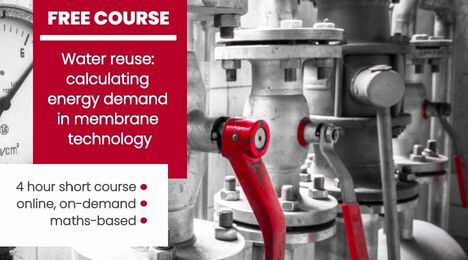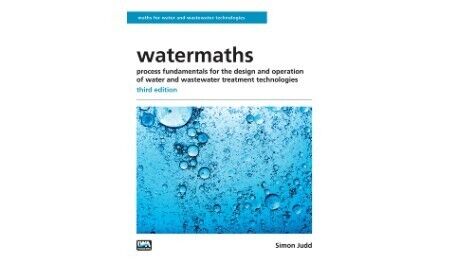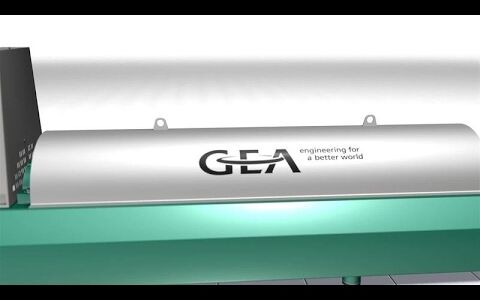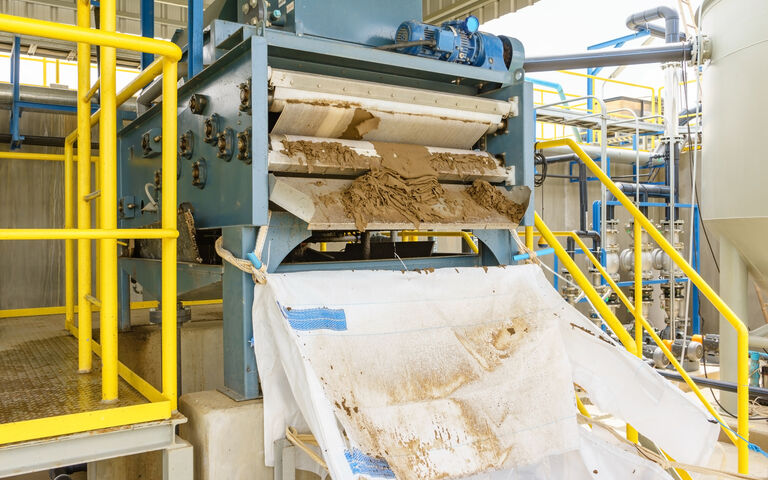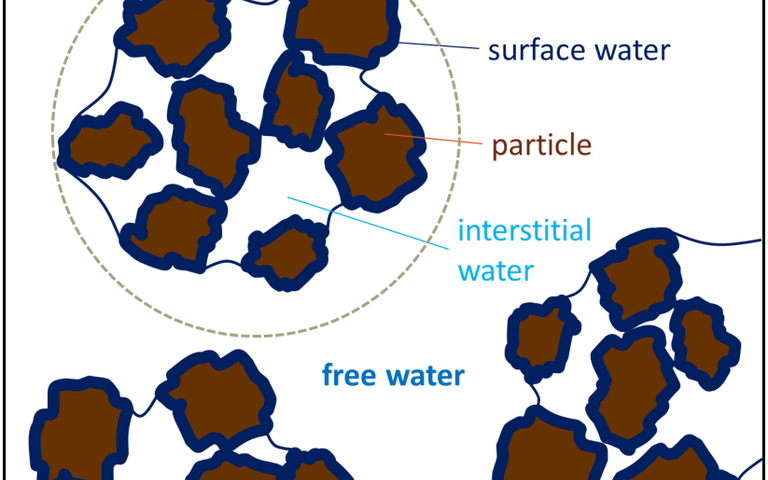Centrifugation − ten research papers

Centrifugation − ten research papers on spinning sludge
Our list is presented in reverse chronological order without preference. It was compiled by Simon Judd in May 2021 and may be updated in future as new papers are published.
The centrifuge has been around for a long time. The original idea was conceived in 1864 by Antonin Prandtl as a means of separating milk and cream. It was first considered as a means for separating solids from sewage sludge by Herman Schaefer in 1902, with the first perforated basket installations taking place five years later.
Almost 120 years after Schaefer’s bright idea, there are now hundreds of centrifuges being used for thickening or dewatering sludge all across the globe. Despite it being an essentially mature technology, there’s still a fair amount of research into the process or elements of it. The selection below encompasses:
- a practical consideration of sludge dewaterability characterisation methods relating to centrifugation for both (a) aerobic, and (b) anaerobic sludge sources
- recovery of rare-earth elements from phosphoric acid sludge
- in situ measurement of sludge thickness using electrical resistance measurement
- a comparative life cycle analysis of centrifugation vs reed bed dewatering
- bench-scale practical measurement of centrifugal dewatering of (a) water and wastewater sludge blends, and (b) chemically-conditioned faecal sludge
- full-scale demonstration and optimisation of municipal wastewater sludge (a) produced from blending sludge streams from two different wastewater treatment works sources, and (b) conditioned with polymer at concentrations determined by principle component analysis, and
- the use of orange essential oil to reduce odour from the dewatered cake.
So, it seems that with centrifugation there’s always some sort of story to tell – whichever way you spin it.
- Selected research papers:
Abstract
Centrifuge are common machines used for sludge thickening and dewatering in wastewater treatment plant but performances and optimal setting parameters are often difficult to predict and optimize, owing to complex mechanisms occurring during separation and high shear stresses undergone by flocs. Laboratory tests are necessary to assess performances and to screen chemicals and dosage in order to decrease optimization time at full scale. They include volatile matters characterization, drainage and CST tests vs mixing time, basket spin tests with shearing, limit dryness determination. The ability of these tests, to assess sludge dehydration and/or to select polymer and dosage, is discussed and is compared with performances obtained in a screw centrifuge decanter at lab and full scale.
© 2020 Elsevier LtdFull Reference
Ginisty, P., Mailler, R., & Rocher, V. (2021). Sludge conditioning, thickening and dewatering optimization in a screw centrifuge decanter: Which means for which result? Journal of Environmental Management, 280 doi:10.1016/j.jenvman.2020.111745
Abstract
Phosphoric acid sludge contains acid (∼54% P2O5) and solid precipitates including rare earth elements (REEs) at concentrations of ∼2200 ppm. Low-cost recovery of valuable P2O5 and simultaneous solid separation could be an economically feasible approach to recovering REEs while increasing the production of phosphoric acid. The sludge, however, is a complicated stream that cannot be separated by traditional technologies because of high viscosity and a large solid content (30-40%). Guided by a force balance model, an efficient solid/liquid separation method is demonstrated, using a continuous-flow centrifugal contactor. The shear regime is bypassed by introducing the sludge directly into the rotor where a centrifugal force is exerted on the fluid, inducing phase separation. Solid particles are trapped in the contactor. High liquid recovery is demonstrated and the effects of process parameters on solid capture are investigated. Three contactors in series yield 94% recovery of solids containing 1500-2895 ppm of REEs.
© 2020 American Chemical SocietyFull Reference
Jang, G. G., Ladshaw, A., Keum, J. K., Zhang, P., & Tsouris, C. (2020). Continuous-flow centrifugal Solid/Liquid separation for the recovery of rare-earth elements containing particles from phosphoric acid sludge. Industrial and Engineering Chemistry Research, 59(50), 21901-21913. doi:10.1021/acs.iecr.0c04128
Abstract
This study investigates the in-situ sludge thickness of polymers in a real-scale horizontal decanter centrifuge using the optimized particle resistance normalization (OPRN) technique. The sludge thickness of poly(methyl methacrylate) (PMMA) in an aqueous sodium chloride (NaCl) carrier fluid was observed as a function of the normalized particle resistance of a wireless electrical resistance detector. The measured resistance of the continuous phase during the centrifugation is set as the reference and normalized following its dominant frequency by Fourier transform. Here, the OPRN limits the particle resistance using the normalization function based on the closed-packing condition (i.e. Krieger 1972 Adv. Colloid Interface Sci. 3 111-36; Phillips et al 1992 Phys. Fluids A 4 30-40; and Rao et al 2002 Int. J. Numer. Methods Fluids. 39 465-83) in the particle sensitivity area (PSA). The normalized value is then plotted in the fitting equation using a nonlinear generalized reduced gradient. The PSA is solved by a simulation study on electrostatics and by static experiments. Two different centrifugation parameters of feed rates and two centrifugal forces at four different measurement points were considered to observe the sludge thickness distribution as a function of operational time. As a result, the in situ sludge thickness is described in the nonlinear fit plot equation with a coefficient score to explain the separation phenomenon inside the decanter centrifuge. The plot agrees well with the experimental data with a high degree of coefficient of determination.
© 2020 IOP Publishing LtdFull Reference
Prayitno, Y. A. K., Zhao, T., Iso, Y., & Takei, M. (2020). In situ measurement of sludge thickness in high-centrifugal force by optimized particle resistance normalization for wireless electrical resistance detector (WERD). Measurement Science and Technology, 32(3) doi:10.1088/1361-6501/abc108
Abstract
In Denmark, the conventional method for treating sewage sludge is mechanical dewatering and subsequent storage. However, sludge treatment reed bed systems, which are holistic sludge treatment facilities combining the dewatering, mineralisation and storage of sludge, have been more common during the last three decades. Treatment of sludge in a sludge treatment reed bed system can be combined with post-treatment (further dewatering and mineralisation) on a stockpile area. This study aimed to compare the environmental performances of a mechanical sludge treatment method with the sludge treatment reed bed system strategy, using the life cycle assessment approach and a life cycle inventory based on newly generated data obtained from Danish reference facilities. The scenarios based on the different treatment methods were initiated by sludge entering the sludge treatment reed bed system or the centrifuge and terminated by land application of the final sludge product. The environmental impacts caused by the sludge treatment reed bed system strategy were comparable to or lower than those caused by the mechanical sludge treatment method. The impacts on climate change were the same for all the treatment scenarios; however, the conversion of organic carbon and nitrogen into gas species was more efficient in the sludge treatment reed bed system compared to mechanical treatment. Thus, mechanically treated sludge contained more nitrogen, causing higher nitrogen emissions (nitrous oxide, nitrate and ammonia) when applied on land. Furthermore, the impact of resource depletion was higher for mechanical dewatering due to a larger fossil fuel demand related to daily operation and longer transportation distances in this scenario. According to the results of the life cycle assessment, there were no considerable environmental gains made by combining the treatment of sludge in a sludge treatment reed bed system with post-treatment on a stockpile area. However, some practical aspects, which are not expressed in a life cycle assessment, should also be taken into consideration when evaluating the performances of sludge treatment scenarios.
© 2018 Elsevier LtdFull Reference
Larsen, J. D., Hoeve, M. T., Nielsen, S., & Scheutz, C. (2018). Life cycle assessment comparing the treatment of surplus activated sludge in a sludge treatment reed bed system with mechanical treatment on centrifuge. Journal of Cleaner Production, 185, 148-156. doi:10.1016/j.jclepro.2018.02.193
Abstract
The blended sludge taken from drinking water treatment plant (WTP) and wastewater treatment plant (WWTP) for centrifugal dewatering was proposed. Residual products of polyaluminum chloride and inorganic particles in alum sludge from WTP were considered to improve dewaterability of sewage sludge from WWTP through the charge neutralization, adsorption bridging, squeezing, and skeleton builders. The sludge with blend ratio of 1:1 and no PAM addition, the specific resistance to filtration was 1.27 × 1013 m/kg, the moisture content was 62% after centrifugal dewatering, and more excellent dewatering performance of blended sludge was proved. Scanning electron microscope showed that the surface of blended sludge had more rough and porosity structure than the sewage sludge. EDS analysis showed that residual alum and inorganic particles existed in blended sludge. 3D-Excitation-emission matrix was used to analyze change of protein-like of sewage sludge and blended sludge with dewatering process. The results implied that alum sludge acted as chemical conditioner and physical conditioner in blended sludge. A hypothesis was suggested to describe the centrifugal dewatering process of blended sludge. The final disposal options of the blended sludge would be landfilling and building material utilization.
© 2017, Springer JapanFull Reference
Yan, A., Li, J., Liu, L., Ma, T., Liu, J., & Ni, Y. (2018). Centrifugal dewatering of blended sludge from drinking water treatment plant and wastewater treatment plant. Journal of Material Cycles and Waste Management, 20(1), 421-430. doi:10.1007/s10163-017-0597-1
Abstract
Decentralised faecal sludge (FS) dewatering in urban slums using centrifugation technology has potential to reduce public health risks and environmental pollution caused by indiscriminate disposal of untreated FS. A laboratory-scale centrifuge was applied to dewater FS from lined pit latrines, conditioned with sawdust and charcoal dust. Response surface methodology and central composite design were used to construct and model relationships between independent variables (FS volume, centrifugation time and speed) and the dependent variable (per cent cake solids) for unconditioned and conditioned (sawdust and charcoal dust) FS. The results demonstrated that the centrifugation technology can yield more per cent cake solids at reduced speeds when physically conditioned. Rotational speed was a significant parameter for unconditioned (original) (p=0.0020) and charcoal dust conditioned FS (p=0.0019). Significant parameters for sawdust conditioned FS were speed (p=0.0001) and quadratic effect of time (p=0.0494). An optimal centrifugation time of 20 minutes and centrifugation container volume of 50 mL at 70–80% full of FS for conditioned FS were obtained. The centrifugation speeds tested in this paper provide critical information for proto-type design of a hand-powered centrifuge, the operating conditions and its subsequent set-up. This can serve as an option for dewatering FS from commonly used sanitation facilities in urban slums, thereby enabling decentralised treatment to reduce costs of FS management and support resource recovery at the source.
© 2017 Elsevier B.V.Full Reference
Semiyaga, S., Okure, M. A. E., Niwagaba, C. B., Nyenje, P. M., & Kansiime, F. (2017). Optimisation of centrifuge operating conditions for dewatering physically conditioned faecal sludge from urban slums. Environmental Technology and Innovation, 8, 28-39. doi:10.1016/j.eti.2017.03.005
Abstract
A five-month centrifuge thickening, digestion and centrifuge dewatering pilot study was conducted at Miami-Dade’s Central District Wastewater Treatment Plant (CDWWTP). The pilot study was set up to simulate future thickening, digester and dewatering operating conditions to establish thickening and dewatering performance criteria. CDWWTP currently processes the sludge produced at both CDWWTP and the North District Wastewater Treatment Plant (NDWWTP) which is transferred via a 16 mile pipeline. During pilot thickening operation, which started in May 2016, three different types of sludges were tested in the centrifuge thickener; CDWWTP’s sludge alone, NDWWTP sludge alone and a blend of both CDWWTP and NDWWTP sludges. Although the CDWWTP WAS only sludge was easily able to thicken in the pilot centrifuge, using 1.5 to 2 gram per dry kilogram (g/kg) or 3 to 4 pound per dry ton (lb/DT) of dry polymer, the NDWWTP Primary Sludge and WAS, which was more dilute, was difficult to handle. The testing showed that stable operation for thickening the NDWWTP sludge could only be achieved when blended with the CDWWTP WAS in a blend tank which allowed stable operation of thickening using 0.75 to 1.5 g/kg (1.5 to 3 lb/DT) of dry polymer. The centrifuge thickened waste activated sludge (WAS) was fed to Plant 2, Cluster 1, Digester 3 to simulate high rate anaerobic digestion. For a period from mid-June to mid-August, the centrifuge was operated 24 hours per day, 7 days a week. The purpose of the continuous operation was to increase the solid content inside Plant 2, Cluster 1, Digester 3 to best simulate future digestion conditions. The dewatering piloting was conducted using the sludge from Plant 2, Cluster 1, Digester 3 that was isolated and fed mechanically thickened sludge. The testing showed that >24% TS cake could be achieved with 12.5 g/kg (25 lb/DT) active dry polymer and a ferric sulfate dose equal to 1.9 gal ferric sulfate per 1,000 gal of sludge. Testing conducted without the use of ferric sulfate conditioning showed that dewatering performance was reduced by 2 to 4% point in cake solids and that solids recovery percentages were lower. Dryer cake at 26-28% TS could be produced using emulsion polymer but required almost double the active polymer dosages than used for the dry polymer.
© 2017 Water Environment FederationFull Reference
Goss, T., Brian, S., Moncholi, M., & Diaz, I. (2017). Centrifuge piloting at Miami’s central district WWTP – overcoming obstacles with a difficult to handle sludge. Paper presented at the Water Environment Federation Technical Exhibition and Conference 2017, WEFTEC 2017, , 2 1038-1055. Retrieved from www.scopus.com
Abstract
This study aims to characterize anaerobically digested sludge (ADS) and correlate the sludge characteristics in terms of soluble organic compounds with polymer demand (PD) during sludge conditioning. The PD required to achieve maximum dewatering of the ADS studied is in the range of 8–10 kg polymer/dry ton. The commonly used capillary suction time parameter to evaluate the solid–liquid separation ability was not a reliable indicator for assessing dewatering. Instead, in this study, a modified centrifugal technique proposed by Higgins (Higgins MCT) was used to assess the maximum achievable dry solids content of the biosolids cake. The Higgins MCT is readily obtained using a bench-scale centrifuge equipped with a modified centrifuge bucket. Using the Higgins MCT, the maximum dry solids contents obtained from conditioned ADS was 30 wt%. These values were comparable to the dry solids content obtained from the same sludge at full-scale level. Our results suggest Higgins MCT is suitable for assessing the final dry solids content and simulating the dewatering process.
© 2016 Balaban Desalination Publications. All rights reservedFull Reference
To, V. H. P., Nguyen, T. V., Vigneswaran, S., Duc Nghiem, L., Murthy, S., Bustamante, H., & Higgins, M. (2016). Modified centrifugal technique for determining polymer demand and achievable dry solids content in the dewatering of anaerobically digested sludge. Desalination and Water Treatment, 57(53), 25509-25519. doi:10.1080/19443994.2016.1157524
Abstract
In the study the comparative analysis of test results of drainage of municipal wastewater sludge was conducted with the use of flocculant Praestol 855BS and the mixture of flocculant Praestol 855BS 50% + orange essential oil 50%, as the reagents supporting this process. It was also attempted to reduce unpleasant smells exuding from the drained sludge. The process of drainage of municipal wastewater sludge was conducted in the laboratory setting centrifuge of MPW-350 type. The variable independent parameters were centrifugation time, centrifugation speed, dosage of flocculant Praestol 855BS as well as dosage of mixture in the proportion of flocculant Praestol 855BS (50%) + orange essential oil (50%). The following parameters were subject to assessment: water content in the sludge, dry mass content in the reflux as well as time of maintenance of the oil's smell in the sludge. The conducted tests demonstrated that the orange essential oil has an impact on drop in resultant quality parameters of the drainage process of municipal wastewater sludge. Batching of the orange essential oil has an impact on considerable reduction of odours exuding from drained wastewater sludge, and thus on improvement of work conditions connected with operation of centrifugal separators. Bearing in mind both the efficient drainage process of wastewater sludge as well as simultaneous reduction of unpleasant smells exuding from the sludge during this process it is assumed and recommended to simultaneously apply both reagents, that is flocculant Praestol 855BS (50%) and orange essential oil, also in the volume of 50%.
© 2016 Copyright by Polish Academy of Sciences and Institute of Environmental Engineering of the Polish Academy of Sciences, Zabrze, PolandFull Reference
Kowalczyk, A. and Piecuch, T. (2016). Sludge dewatering in a decanter centrifuge aided by cationic flocculant Praestol 855BS and essential oil of waste orange peels. Archives of Environmental Protection, 42(1), 3-18. doi:10.1515/aep-2016-0001
Abstract
The performance of the centrifuge dewatering unit in Sungai Udang centralized sludge treatment facility has been studied using multivariate statistical approach. The relationships between bio-solids production and 14 parameters were analyzed using principle component analysis (PCA) and multiple linear regression (MLR) analysis. PCA was used to simplify the complexity among variables affecting the production of bio-solids in the treatment facility. All varimax factor (VF) values obtained from the PCA were used as independent variables in MLR analysis. It was found that VF1 (wet sludge and mixed liquor suspended solids) and VF4 (polymer dosage) had significant linear relationships with bio-solids production, which accounted for 74.32% of variations in the bio-solids production. This approach could be used to precisely estimate the amount of sludge produced by the centrifuge dewatering unit and for better evaluation of system performance that meets the design criteria and future requirements for sludge disposal.
© 2014 Balaban Desalination Publications. All rights reservedFull Reference
Rahmat, S., Kusin, F. M., & Wan Johari, W. L. (2016). Performance assessment of centrifuge dewatering unit using multivariate statistical approach: A case study of a centralized sludge treatment facility (CSTF) in Palacca, malaysia. Desalination and Water Treatment, 57(9), 3904-3915. doi:10.1080/19443994.2014.98865P

Professor Simon Judd has over 30 years’ post-doctorate experience in all aspects of water and wastewater treatment technology, both in academic and industrial R&D. He has (co-)authored six book titles and over 200 peer-reviewed publications in water and wastewater treatment.
In his capacity as director of Judd Water & Wastewater Consultants, Simon is co-owner of SludgeProcessing.com, as well as of our sister website The MBR Site. He was Professor in Membrane Technology at the Cranfield Water Science Institute at Cranfield University in the UK from 1992 until 2021. Simon was also a Research Chair at Qatar University in the Middle East for six years until September 2018.

